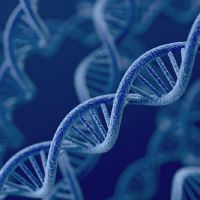Werner Syndrome is a genetic disorder of premature aging, characterized by genetic mutations thought to be caused by the RecQ helicase-like gene (also known as the WRN gene), which generates the WRN protein. Previous studies suggest that the normal form of the protein is an enzyme that maintains the structure and integrity of a person’s DNA. When the protein is mutated in Werner syndrome it disrupts the replication and repair of DNA and the expression of genes, but scientists did not understand how the mutated WRN protein disrupted these critical cellular processes. A team of scientists at Salk Institute (California, USA) has revealed that the the genetic mutations underlying Werner syndrome, a disorder that leads to premature aging and death, resulted in the deterioration of bundles of DNA known as heterochromatin. Specifically, deletion of the WRN gene was found to lead to heterochromatin disorganization, suggesting an important role for the WRN protein in maintaining heterochromatin. The researchers further showed that the protein interacts directly with molecular structures known to stabilize heterochromatin. The study authors submit that: “Our observations uncover a role for [the RecQ helicase-like gene] in maintaining heterochromatin stability and highlight heterochromatin disorganization as a potential determinant of human aging.”
Novel Mechanism of Aging Revealed
Zhang W, Li J, Suzuki K, Qu J, Wang P, Zhou J, Liu X, et al. “A Werner syndrome stem cell model unveils heterochromatin alterations as a driver of human aging,” Science, Vol. 348 no. 6239 pp. 1160-1163.
RELATED ARTICLES




